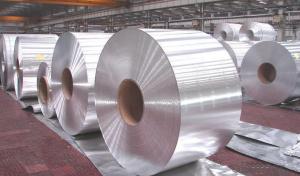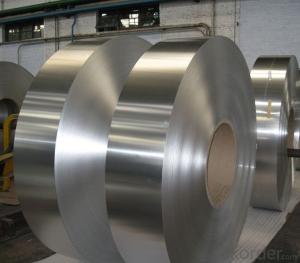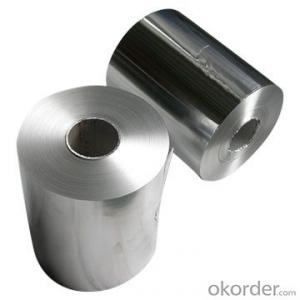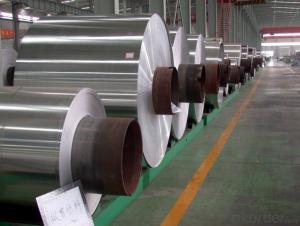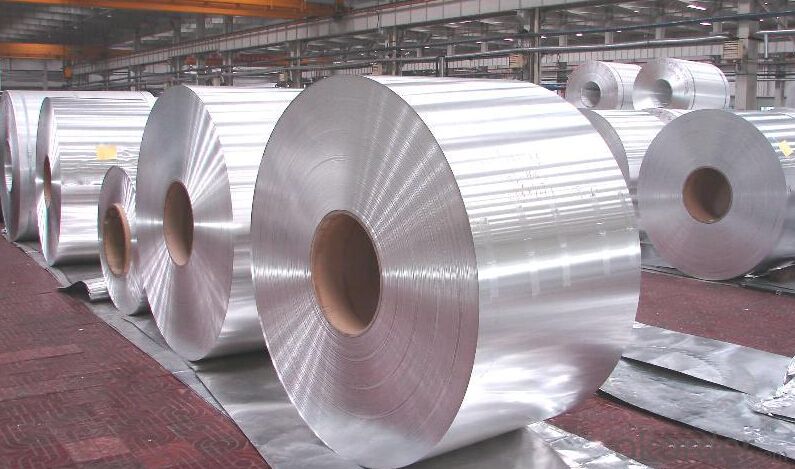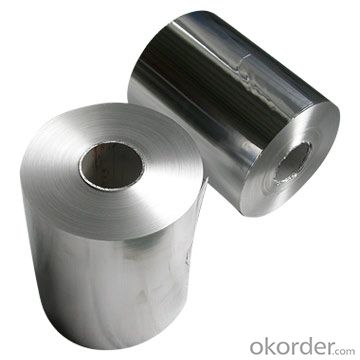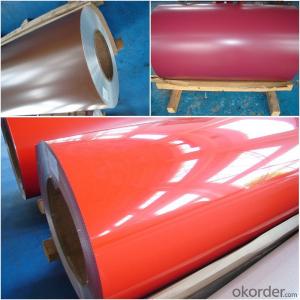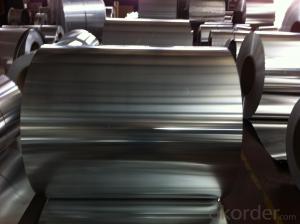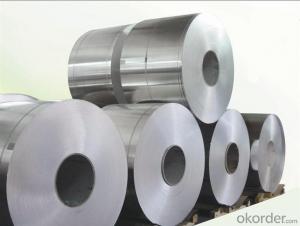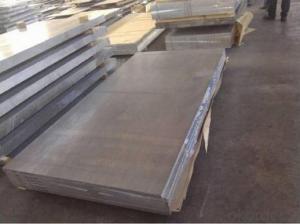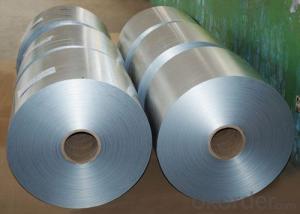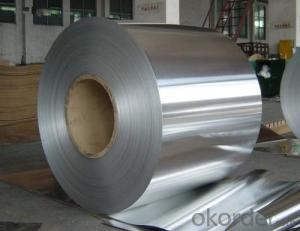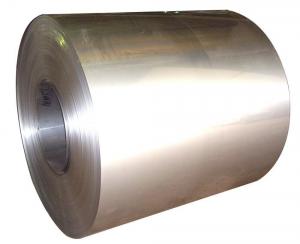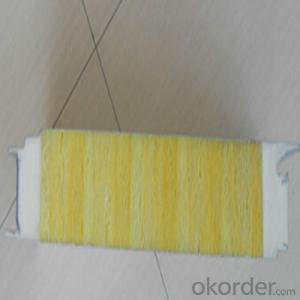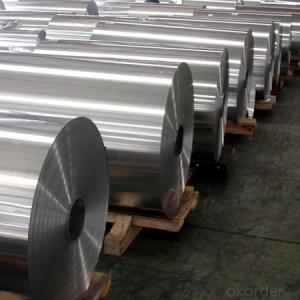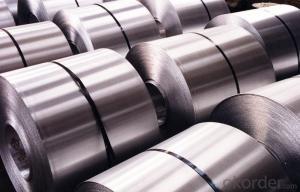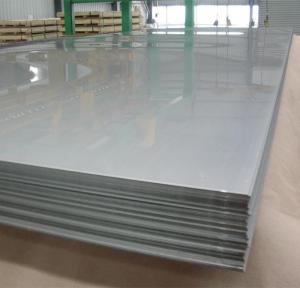Camouflage Sandwich Panel and Sheet Aluminum Coil Material
- Loading Port:
- China main port
- Payment Terms:
- TT OR LC
- Min Order Qty:
- 5 m.t.
- Supply Capability:
- 360 m.t./month
OKorder Service Pledge
OKorder Financial Service
You Might Also Like
Specification
Sandwich Panel and sheet Aluminum Coil Material
Hot-rolled High Quality Low Price Aluminum Coil is widely used in manufacturing aluminum thin sheet and aluminum foil. It is suitable for further machining with original standard quality. It is easy to be controlled and be manufactured to according to requirements.
Temper: O, F, HXX
Thickness: Thickness
Width: 1000-1500mm
Type: Coil/Roll
Surface Treatment: mill finished
Application: Decoration, packaging, printing, covering
Standard size: Upon customer's demand
Quantity: 18tons(±10%)in one 20 feet container
Hot Rolled Aluminium coil | ||||||||||||||||
Aluminium Coils, non-alloy and alloy products have many different applications, they are used windly throughout construction, building, decoration, lighting, metal nameplate, aircraft and aerospace structures, etc. | ||||||||||||||||
Specification | ||||||||||||||||
ALLOY | TEMPER | THICKNESS | WIDTH(mm) | LENGTH(mm) | ||||||||||||
1050,1060,1070, | O,F, H12, 114,H18,H22, H24,H26,H32, H34,H36,H111, | 3.0-10.0 | 1000--1500mm | in Coil | ||||||||||||
chemical composition | ||||||||||||||||
Alloy | Si | Fe | Cu | Mn | Mg | Cr | Ni | Zn | Ca | V | Ti | Other | Min.Al | |||
1050 | 0.25 | 0.40 | 0.05 | 0.05 | 0.05 | - | - | 0.05 | - | 0.05 | 0.03 | 0.03 | 99.50 | |||
1060 | 0.25 | 0.35 | 0.05 | 0.03 | 0.03 | - | - | 0.05 | - | 0.05 | 0.03 | 0.03 | 99.60 | |||
1070 | 0.20 | 0.25 | 0.04 | 0.03 | 0.03 | - | - | 0.04 | - | 0.05 | 0.03 | 0.03 | 99.70 | |||
1100 | 0.95 | 0.05-0.2 | 0.05 | - | - | - | 0.10 | - | - | - | 0.05 | 99.00 | ||||
3003 | 0.60 | 0.70 | 0.5-0.2 | 1.0-1.5 | - | - | - | 0.10 | - | - | - | 0.15 | 96.95-96.75 | |||
3004 | 0.30 | 0.70 | 0.25 | 1.0-1.5 | 0.8-1.3 | - | - | 0.25 | - | - | - | 0.15 | 96.55-95.55 | |||
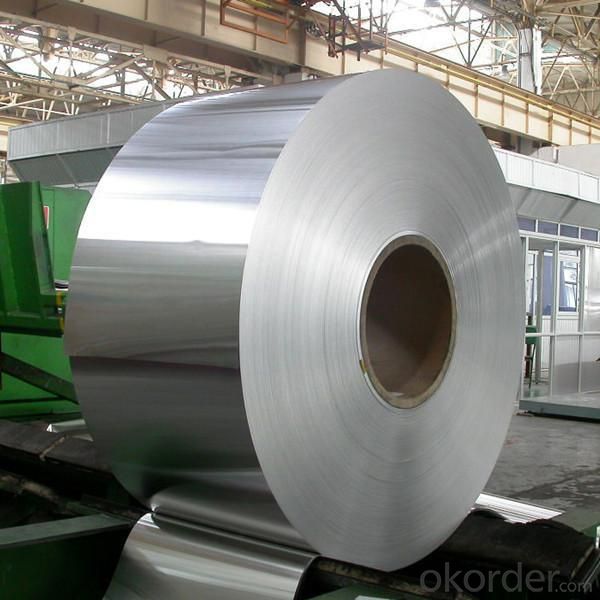
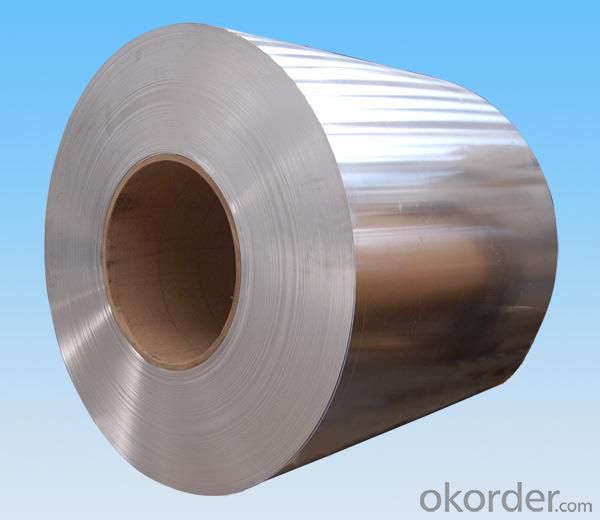
Packaging detail: First, plastic cloth; Second, Pearl Wool ; Third, wooden cases with dry agent ,without fumigation, wooden pallets
Delivery detail: Within 25days
FAQ
1. How can I get some samples?
We are honored to offer you samples. New clients are expected to pay for the courier cost. The samples are free for you.
2 Do you have any certificates?
Our products passed inspection of SGS, FDA, and CE Quality is priority! Every worker keeps the QC from the very beginning to the very end, Quality control department especially responsible for quality checking in each process.
3 Can your factory print or emboss my logo on the goods?
Yes, we can print or emboss the logo on the goods or their packing box.
4 What information should I let you know if I want to get a quotation?
1) The specification of products (length x width x thickness);
2) The temper and alloy.
3) The final product you will use to be made
4 It will be better if you can show us the pictures or design sketch. Samples will be best for clarifying. If not, we will recommend relevant products with details for reference.We usually produce goods based on customers
Samples or based on customers’ picture, logo, sizes etc.
- Q: What are the safety precautions when working with aluminum sheets?
- To ensure your well-being while working with aluminum sheets, it is crucial to adhere to certain safety measures. Here are some important guidelines to consider: 1. Personal Protective Equipment (PPE): Safeguard yourself from potential hazards by consistently wearing appropriate PPE, such as safety goggles, gloves, and a face mask. Aluminum sheets can cause injury if they come into contact with your eyes, skin, or respiratory system due to sharp edges, metal filings, or dust particles. 2. Ventilation: Minimize the accumulation of aluminum dust or fumes by ensuring proper ventilation in your work area. This is particularly important when cutting or shaping aluminum sheets to prevent inhaling harmful airborne particles. 3. Handling and storage: Handle aluminum sheets with care to prevent injuries, as they may have sharp edges. It is essential to wear gloves while handling them. Additionally, store the sheets securely and in an organized manner to avoid accidents like tripping or falling. 4. Cutting and shaping: Utilize appropriate tools specifically designed for cutting or shaping aluminum sheets. Refrain from using tools unsuitable for aluminum, as they can cause damage or create unsafe conditions. Make sure the cutting area is free of clutter and maintain awareness of your body position to prevent accidents. 5. Fire safety: Exercise caution regarding fire hazards since aluminum is highly flammable. Keep flammable materials away from your work area and avoid using open flames or sparks nearby. Be prepared for a fire by having a readily accessible fire extinguisher and knowing how to use it effectively. 6. Training and knowledge: Acquire proper training and knowledge concerning working with aluminum sheets. Understanding the properties of aluminum, appropriate techniques, and safety precautions can effectively prevent accidents and injuries. 7. Regular maintenance: Maintain your tools and equipment in good working condition. Regularly inspect them for any damage or signs of wear and tear, and promptly replace or repair as necessary. Faulty or poorly maintained tools can increase the risk of accidents when working with aluminum sheets. By adhering to these safety precautions, you can minimize potential risks and ensure a safe working environment when handling aluminum sheets.
- Q: what’s the difference of activated aluminum and aluminum sheet?
- 39,the thermal treatment of age hardening aluminum alloy, 40, lanthanum-praseodymium-cerium aluminum alloy and its producing technology, 41,casting method of cool room pack alloy without draft angle, 42, use the anti-corrosion alloy layer to protect the surface of nickel base alloy products, 43,saltless and inoxidizability remelting method of aluminum, aluminum alloy and aluminum waste...
- Q: Are the aluminum sheets suitable for manufacturing food processing equipment?
- Yes, aluminum sheets are suitable for manufacturing food processing equipment. Aluminum is a lightweight, durable, and corrosion-resistant material, making it ideal for use in the food industry. It is non-toxic, odourless, and does not affect the taste or quality of the food being processed. Additionally, aluminum is easy to clean and maintain, ensuring hygiene standards are met. Its ability to conduct heat efficiently also makes it suitable for applications such as cooking and baking. Overall, aluminum sheets are a popular choice for manufacturing food processing equipment due to their numerous beneficial properties.
- Q: Can the aluminum sheets be used for manufacturing automotive radiators?
- Yes, aluminum sheets can be used for manufacturing automotive radiators. Aluminum is preferred in radiator manufacturing due to its excellent heat transfer properties, lightweight nature, and corrosion resistance.
- Q: What are the primary components that make up aluminum sheets?
- <p>Aluminum sheets are primarily composed of aluminum, which is a lightweight and malleable metal. They are made from pure aluminum or aluminum alloys, which may include small percentages of other elements to enhance specific properties such as strength, corrosion resistance, or workability. Common alloying elements include copper, magnesium, manganese, silicon, and zinc. The exact composition varies depending on the specific grade of aluminum and its intended use. Pure aluminum is soft and not commonly used for sheets; instead, alloys are preferred for their improved strength and durability.</p>
- Q: I'm was thinking of buying an aluminium bike but I saw some good bikes with hi-ten.
- John and WLE, I hate to disagree... When it comes to bikes in the quality that is presented, the high tensile steel model will be the better one. On lower priced bikes, aluminum frames tend to be heavier than steel due to the low-zoot material. It is a fact that aluminum AS A MATERIAL is half the weight of steel. It is also a fact that it is 1/3 the strength. To make a low end aluminum frame as strong as a steel one, more material has to be added and will be heavier than the steel one. There is a reason that you see more aluminum bikes than steel at places like Walmart. They are cheaper to make. Unless you plan to spend HALF AGAIN what you are looking at for an aluminum bike over a steel model, don't bother... just stay with the steel one.
- Q: This question asks for a list of various fasteners that are commonly used in the installation process of aluminum sheets.
- <p>There are several types of fasteners used for installing aluminum sheets, including: 1. Self-tapping screws, which create their own threads in the material. 2. Rivets, which join two pieces of material by compressing them together. 3. Pop rivets, a type of rivet that can be installed using a handheld tool. 4. Structural adhesives, which bond the sheets together without visible fasteners. 5. Welding, although not a fastener, it's a method used to join aluminum sheets permanently. 6. Mechanical fasteners like bolts and nuts, which are tightened to secure the sheets. 7. Clips and clamps, used for temporary or decorative installations. Each type has its own advantages and is chosen based on the specific requirements of the installation, such as load-bearing needs, aesthetic considerations, and the environment in which the aluminum sheets will be used.</p>
- Q: How does the surface roughness of aluminum sheet affect its performance?
- The overall performance of an aluminum sheet can be greatly influenced by its surface roughness. The roughness of the sheet's surface refers to the presence of irregularities, bumps, and texture. Various methods, such as Ra or Rz, can be used to measure these irregularities. One important effect of surface roughness on aluminum sheet performance lies in its ability to bond with other materials. A smoother surface allows for better adhesion, whether through welding, gluing, or painting. In contrast, a rough surface reduces the contact area and weakens the bond. This is particularly crucial in applications where the aluminum sheet is used structurally or in manufacturing processes that require strong adhesion. Surface roughness also affects the sheet's light reflection capabilities. A smoother surface reflects light more uniformly, resulting in a higher level of reflectivity. On the other hand, a rough surface scatters light in different directions, decreasing overall reflectivity. This property is relevant in applications like architectural cladding, where the desired aesthetic appearance depends on consistent light reflection. Additionally, the surface roughness of aluminum sheets can impact their resistance to corrosion. A smoother surface is less susceptible to corrosion as it provides fewer sites for corrosion to start. Conversely, a rougher surface may contain micro crevices or grooves that can trap moisture, salts, or other corrosive substances, speeding up the corrosion process. Maintaining a smooth surface is crucial in applications where corrosion resistance is vital, such as marine environments or outdoor structures. Lastly, surface roughness affects the mechanical properties of the sheet. A rough surface can concentrate stress, making the sheet more prone to fatigue, cracks, or other mechanical failures. Smoother surfaces distribute stress more evenly, enhancing the sheet's overall strength and resistance to deformation. In conclusion, the surface roughness of an aluminum sheet is of utmost importance in determining its performance. It affects adhesion, reflectivity, corrosion resistance, and mechanical properties. Therefore, it is essential to consider and control surface roughness in various applications to ensure optimal performance and longevity of aluminum sheets.
- Q: How do I cut aluminum sheets?
- To cut aluminum sheets, you will need a few tools and precautions. Here's a step-by-step guide to help you through the process: 1. Safety first: Always wear protective gear, including safety glasses, gloves, and a dust mask to protect yourself from the metal shavings. 2. Choose the right tool: There are a few options for cutting aluminum sheets, depending on their thickness. For thin sheets (up to 1/8 inch), a manual hand shear or a utility knife with a sharp blade can be sufficient. For thicker sheets, you may need power tools such as a jigsaw, circular saw, or a specialized aluminum-cutting saw. 3. Measure and mark: Use a measuring tape, ruler, or a straightedge to determine the desired size of the sheet. Mark the cutting line on the sheet using a permanent marker or a scribe. 4. Secure the sheet: Use clamps to secure the aluminum sheet firmly to a workbench or a cutting surface. This will prevent the sheet from moving during the cutting process, ensuring accurate cuts. 5. Cutting with a hand shear or utility knife: For thin sheets, start by aligning the cutting edge of the shear or utility knife with the marked line. Apply firm and even pressure to make a straight cut. If using a utility knife, you may need to score the sheet several times before it breaks off. 6. Cutting with power tools: If using a jigsaw, circular saw, or an aluminum-cutting saw, make sure you have the appropriate blade for cutting metal. Set the saw's cutting depth slightly deeper than the thickness of the aluminum sheet. Align the blade with the marked line and slowly guide the saw along the cutting path, ensuring a smooth and steady motion. Apply light pressure and let the saw do the work. 7. Finishing touches: Once the cut is complete, inspect the edge for any burrs or roughness. Use a metal file or sandpaper to smooth out any imperfections. Remember, practice caution and take your time when cutting aluminum sheets. It's always a good idea to test your cutting method on a small scrap piece before proceeding with the actual sheet.
- Q: What are the different methods of surface laminating aluminum sheets?
- There are several methods of surface laminating aluminum sheets, each offering unique benefits and suitable for different applications. Some of the most common methods include: 1. Adhesive bonding: This involves applying an adhesive layer between the aluminum sheet and the desired surface material. The adhesive is typically cured through heat or pressure, forming a strong bond. This method is versatile and can be used with various surface materials like wood, plastic, or glass. 2. Roll bonding: Also known as cladding or cold roll bonding, this method involves sandwiching the aluminum sheet between two other metal sheets and applying high pressure to create a solid bond. Roll bonding is commonly used in the production of composite materials, such as aluminum-clad steel sheets. 3. Thermal spraying: This process involves melting or heating aluminum powder and spraying it onto the sheet surface using a thermal spray gun. The molten aluminum solidifies upon contact, forming a durable coating. Thermal spraying is often used for corrosion protection or as a base layer for subsequent surface treatments. 4. Powder coating: In this method, a dry powder paint is applied to the surface of the aluminum sheet electrostatically. The sheet is then heated, causing the powder to melt and form a smooth, protective coating. Powder coating provides excellent durability, resistance to impact, and a wide range of color options. 5. Anodizing: Anodization is an electrochemical process that enhances the natural oxide layer on the surface of aluminum sheets. By immersing the sheet in an electrolytic bath and applying an electric current, a controlled oxide layer is formed, providing corrosion resistance, improved adhesion for paint or adhesive, and aesthetic finishes. 6. Lamination with protective films: A protective film can be applied to the surface of the aluminum sheet to protect it during transportation, handling, or processing. These films are typically made of plastic and offer temporary protection against scratches, abrasions, and dirt. These are just a few of the many methods available for surface laminating aluminum sheets. The choice of method depends on factors such as the desired properties, intended use, and the specific requirements of the application.
Send your message to us
Camouflage Sandwich Panel and Sheet Aluminum Coil Material
- Loading Port:
- China main port
- Payment Terms:
- TT OR LC
- Min Order Qty:
- 5 m.t.
- Supply Capability:
- 360 m.t./month
OKorder Service Pledge
OKorder Financial Service
Similar products
Hot products
Hot Searches
Related keywords
